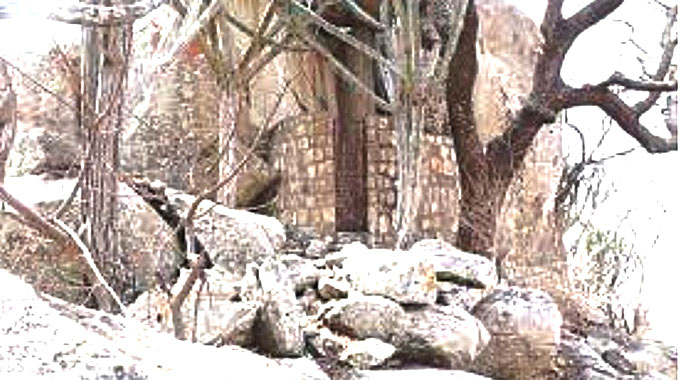Why safeguarding Mzilikazi heritage sites matters

Sifelani Tsiko Agric, Environment & Innovation Editor
“UMzilikazi ka Matshobana Inkosi yaMaNdebele. Intaba yaDilika Ngo 5 September 1868. Zonke Izizwe ziti Matshobana! Bayete . . . In Memory of UMzilikazi, King of the AmaNdebele Nation who settled in this country in 1838 . . . Erected by European subscription — 1941,” reads an inscription at a memorial site along Old Gwanda Road.
By all means, Mzilikazi’s grave and his memorial site are supposed to be the heart and lung of our collective memory about the ancient Ndebele Nation.
The grave and memorial cultural heritage site should give us the foundation to shape the philosophical vision of our nation and what should really bind us together as a country.
But the sorry state of the road leading to the grave and the complete neglect of the memorial site shows how unconcerned we are as a nation in terms of the preservation, presentation and promotion of our glorious cultural heritage.
The road sign to the Mzilikazi grave is hardly visible and there is no proper road to the home of the custodian of the site.
There are no ablution facilities and bins at the site. There is no sitting place and museum-like infrastructure that captures the history of one of the most prominent leaders in the history of the entire southern Africa region.
Both sites are largely unprotected and open to vandalism. There is tall grass at the memorial site, with no one manning the place.
The site is in a bad state and there has been lack of renovation and lack of proper preservation and management of this precious historical site.
Owing to the lack of resources on the part of the Khumalo clan who are the custodians of the grave, the site is open to disfigurement and damage due to lack of a fence and security around the grave.
The memorial site too is largely in danger of disfigurement and the vandalisation of objects and the epitaph.
The National Museum and Monuments of Zimbabwe (NMMZ) says the upkeep and maintenance of the grave is the sole responsibility of the Khumalo clan, while it only sends a person once in a while to check on the memorial site.
The neglect and failure to protect places of special and historic importance raises pertinent points about the preservation of these historical monuments.
Is it right to neglect things that are part of our national history and heritage?
Should we leave everything to the Khumalo clan?
Is it not time the NMMZ takes charge in collaboration with the Khumalo clan to run and properly maintain the two sites?
Is the construction of a road, installation of proper signage and ablution facilities something beyond our means as a nation?
Should we let foreign researchers and tourists visit the sites absolutely free of charge because we feel strongly that Mzilikazi’s grave is a sacred shrine, and not a tourist site?
Zimbabwe and most African countries are still the biggest losers in the global tourism and hospitality industry because we continue to give tourists free access or cheap rates to major historical and tourism resort spots.
For instance, a researcher from the US and UK will spend more on airlines controlled by billionaires in those countries while paying next to nothing to the host country.
British Airways, Virgin Atlantic and other major airlines rake in millions from tourists that visit our historical sites.
In May 2017, the Rwandan government doubled the price of a permit to visit the gorillas from $750 to $1 500, making the fee the highest in the region after realising that communities living near the park were receiving very little of the tourism revenue.
Major airlines, tour operators and hotels are largely controlled by big multinationals from Europe and the US. They are the biggest beneficiaries of the tourism business.
Every year, researchers and tourists from abroad visit the Mzilikazi grave and memorial site for free.
The Khumalo clan benefits nothing.
Researchers and travel writers even go on to publish and market books, raking in thousands of dollars from our rich historical heritage.
While major airlines and hotels are benefiting from researchers and travel writers, we get nothing for the proper preservation of our cultural heritage sites.
If we are able to get modest amounts from tourists and travel writers, the two sites could be preserved and positively impact not only on the proper maintenance and care of the historical sites, but growth of our tourism industry as well.
At Matopo National Park, just close to Mzilikazi’s grave and memorial site, Cecil John Rhodes’ grave and memorial sites are in a better state, even though a lot now needs to be done to upgrade the roads, ablution facilities and the museum that continue to attract tourists from all over the world.
The Khumalo clan and all cultural activists should debate and campaign for the restoration and conservation of Mzilikazi’s grave and memorial site.
Lack of coordination between the NMMZ and the Khumalo clan as well as lack of interest in our history is part of the reason we are losing our heritage.
Right now, there is a rising trend of incidences of vandalism, theft of antiques and disfigurement of historical sites.
Our country’s premier museums and historical sites lack resources and planning for proper upkeep, security and display of collected art objects.
These monuments of importance require good upkeep and we need to move with the times to ensure their continued existence for the benefit of our collective national memory.
Yes, we have the NMMZ charged with the protection and preservation of our monuments, but it is poorly resourced.
We cannot leave everything to the Khumalo clan for the protection and maintenance of our ancient monuments.
We need to debate and interrogate how we should protect and preserve our precious monuments that help bring the civilisation of ancient Zimbabwe to life.
Not only is Mzilikazi’s grave and memorial site unique and a rich repository of the Ndebele culture, but it’s an important rallying point that illustrates the spirit of tolerance, bravery and statecraft that was characteristic of the ancient Ndebele Nation.
We, as citizens of Zimbabwe, have a special responsibility to preserve our heritage as one of our fundamental duties enshrined in our Constitution.
Zimbabwe is endowed with the richest and most diverse stock of cultural and architectural heritage which we must preserve and conserve.
The establishment of a foundation could be one strategic way to help preserve the Mzilikazi historical sites.
The Bob Marley Foundation in the island nation of Jamaica is one good example of how we can explore ways to pay homage to our historical legends.
The foundation manages the home of the global icon and reggae legend Bob Marley which contains his personal artefacts, recording studio and his bedroom among other things.
Admission to the museum, which includes a tour, costs US$25 for adults and US$12 for children aged between 4 and 12.
One pays US$50 to visit Marley’s grave. The Marley estate continues to generate more than US$20 million a year according to Forbes, and most of the Marley children run their own ventures, tapping the brand value of their famous father’s name for sale power.
In 2018, according to Forbes, the estate earned $23 million, and it’s estimated the family fortune is worth more than US$100 million.
Yes, critics can argue that we should not monetise Mzilikazi’s grave, that it is sacred and not a tourist attraction.
The Bob Marley example offers a glimpse into how we can maintain Mzilikazi’s grave and memorial site, with visitors paying a token fee to build roads, ablution facilities, a museum and for the general upkeep of the place.
Creating a Mzilikazi Foundation is possible.
That can first and foremost play a critical role in documenting the history of the founder of the Ndebele Nation, not from the European narrative, but from the African perspective.
It can also manage the sites in much the same way as the Bob Marley Foundation manages the mausoleum and museum, helping to rake in income for the Marley estate from nearly one billion streaming spins annually.
Stories like Bob Marley’s, despite estate fights that go with it, serve as compelling reminders why estate planning is important for everyone with assets as well as for the protection and preservation of a cultural heritage.
The Khumalos may wrangle over it, but at least, its one strategy that can help give a facelift to the Mzilikazi shrine and memorial monument.
Heritage sites in our country are in a state of neglect mainly because people are not aware of the significance of these sites.
For a common man, it is just a grave and a memorial site. Therefore, steps need to be taken to create awareness about these sites and their significance so that people start considering Mzilikazi’s grave and memorial site as national assets of historical importance. As more and more people become aware about the importance of heritage sites, they will take increased interest in their conservation and become more vigilant.
This will automatically put concerned Government agencies on high alert about conserving and preserving heritage sites.
It is totally unacceptable that important cultural heritage sites such as Mzilikazi’s grave and memorial site should lie in such a sorry state when we have a duty to safeguard and preserve our culture.
We have a collective duty — the Khumalo clan and all concerned citizens — to ensure that we preserve these heritage sites.
James Baldwin once said: “History is not about the past. It’s about the present. We take it with us, we cannot escape our history . . . It is through this prism of our history that we see the world. What was done in the past and the present affects us now whether directly or indirectly.”








Comments